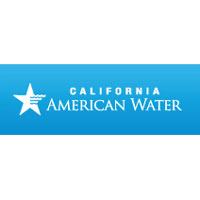2014 was a banner year for investor-owned water utilities (IOUs) filing General Order 156 (GO 156) reports. There was not only an increase in the total dollars spent with women-, minority- and disabled veteran-owned business enterprises (WMDVBEs), but also an increase in the number of diverse and service-disabled veteran businesses to the supply chain.
For the second year in a row, the combined IOU “spend” with WMDVBE’s surpassed the 21.5 percent goal established in GO 156, reaching 23.4 percent. This represents a total dollar amount spent with WMDVBE’s of $122,927,102. The number of certified WMDVBE’s added to the collective supplier base increased by 2.5 percent from 1,041 to 1,067. In 2014, the number of participating WMDVBE’s increased from 474 to 553 or 17 percent.

In the 2014 reporting, there were several “firsts” for IOUs. California Water Service (Cal Water) and San Jose Water Company surpassed the 21.5 percent goal for the first time, and Cal Water joined other companies that reported a total spend by the Standard Industrial Classification (SIC) code.
There were several other accomplishments achieved during 2014. In June, Golden State Water Company (GSWC) was presented the Utility Company of the Year Award by the Black Business Association (BBA). The award recognized GSWC’s commitment to support the growth and development of the BBA and provide economic opportunities for diverse suppliers. Also, Robert MacLean, President of California American Water (CAW), was appointed Co-Chair of the National Utilities Diversity Council and is the first regulated water utility participant to serve on the Council.
As in the past, IOUs were asked to meet individually with the California Public Utilities Commission’s (CPUC) Utility Supplier Diversity Program staff to discuss the IOUs’ specific results. The interview agenda included general questions about their positions on the tenets of GO 156 and their approach to meeting program goals.
To provide additional confidence in the accuracy of GO 156 reports, the CPUC requires that a minimum of one random audit of an annual GO 156 report be conducted every two years. Initially, the CPUC’s audit branch audited an energy company’s 2012 report. Subsequently, a telecommunications company’s 2014 report was audited. 2016 will be the first year water utilities will come under scrutiny, and a water utility’s 2015 report will be randomly selected for an audit.
In the future, CAW will continue to focus on diversity in employee recruitment and retention, employee benefits, procurement, community involvement and governance, resulting in improvements in CAW’s culture and customer service. GSWC will implement an e-procurement program, which should streamline the procurement process, improve outreach efforts with suppliers and gain control and visibility over spending.
Collectively, IOUs have achieved results that continue to demonstrate their commitment to supplier diversity while maintaining a robust framework for continued success.





